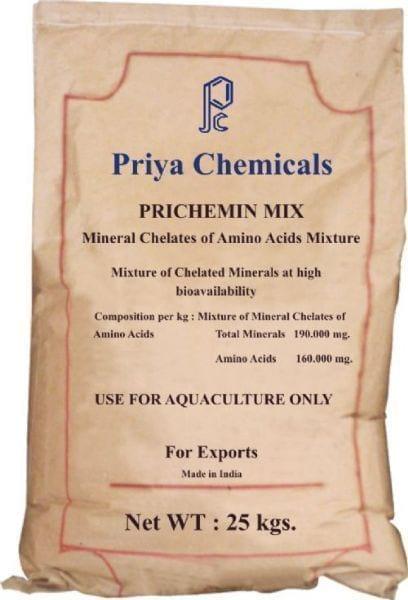Black Soldier Fly Prepupae for Aquaculture Diets
Mass Production of Black Soldier Fly Prepupae for Aquaculture Diets
Published: January 26, 2012
Summary
After decades of work in Tifton, Georgia, University of Georgia researchers think soldier flies will be a viable alternative to fish meal in aquaculture diets. Early work with the black soldier fly ( Hermetia illucens ) used manure as the growth media, but recent efforts show that food byproducts can be a better soldier fly diet. Catfish grow well on soldier flies and other fish, including tilapi...
Related topics:
Authors:

Recommend
Comment
Share
Recommend
Reply
Recommend
Reply

11 de abril de 2015
Check the site below for black soldier fly larvae:
http://www.phoenixworm.com/pages/contact-us
Recommend
Reply
26 de junio de 2015
So many positive things has been said about use of larvae of sorts as cheaper source of protein source in animal feeds. Our studies has shown that the proximate quality of housefly maggots can adequately supply the protein needs of fish and livestock feeds. However, the greatest problem is with the quantity of maggots produced. Our attempts at maggot production has yielded a maximum of 168g (wet weight) of maggots per 50kg of livestock wastes/substrates. This translates to mean a paltry 3.3g of maggots per Kg of wastes or barely 3kg of maggot per tonne of substrate if my calculation is right. My problem right now is to find methods of boosting production of maggot per unit of substrate. We have tried experimenting with some other methods described in literature without success. We are open to suggestions.
Afamdi Anene Ph. D
Recommend
Reply

26 de junio de 2015
House fly or soldier fly, both have a dry matter conversion challenge. The type of substrate used as a feed makes a big difference, often because of the amount of un-digestible fiber. But also because of a lack of micronutrients needed for optimum growth rate. Over-feeding the maggots is another way to lower the dry matter conversion. Once a substrate is selected, feeding rates should be optimized. Easy to say, but are you counting maggots or eggs? If not, you are probably over-feeding or under-feeding.
Recommend
Reply


PRICHEMIN MIX
Priya's PRICHEMIN MIX is a mineral supplement for aquaculture. It consists of a mix of mineral chelats from aminoacids
Suggested link

26 de junio de 2015
Livestock manure is variable in quality. Pig manure MAY be a good choice if the pigs are fed a corn or wheat diet for fast pig growth. Subsistence pig production may result in fibrous manure, similar to cattle manure (which has lower dry mater conversion).
Recommend
Reply

26 de junio de 2015
Even at best dry matter conversion by insects seems to be about 25%. So, in you case you are getting about 0.4% conversion, which is very low. For BSF, we use about 4,000 eggs per sq ft of substrate (about 2 pounds wet weight) then feed each day with more wet substrate. We do not overfeed, or conversion suffers.
Current studies are working at mass production of eggs so that substrates can be properly stocked. If proper stocking occurs, the substrate that is 70% moisture will be converted to a relatively dry and friable residue that can be used as a soil amendment or fertilizer.
Recommend
Reply
26 de junio de 2015
In our first attempt, poultry (layer) droppings, cattle dung, pig dung, and whole cattle blood were used as substrates for maggot production. The quantity of maggot produced was least for pig dung. Poultry manure and cattle blood were better substrates for maggot production. It is possible that the substrates were not moist enough. If I may ask what quantity of moisture is required to boost maggot production?
Reference
Anene, A., Afam-Anene, O. C., Ike K and Ekekwe, N. H. (2013): Preliminary investigations on quantity and proximate quality of maggots produced from four different sources of livestock wastes. Journal of Research in Biology 3(6): 001-006.
Recommend
Reply


PRICHEMIN MIX
Priya's PRICHEMIN MIX is a mineral supplement for aquaculture. It consists of a mix of mineral chelats from aminoacids
Suggested link

26 de junio de 2015
Poultry manure is good if it is not mixed with bedding material. Our egg laying chickens drop manure directly on maggots so no dilution occurs. That is a good substrate.
Pig manure should be undiluted and not mixed with bedding for best results. Some pigs grown on concrete floors can provide good manure substrate if the manure is scraped or shoveled to the maggot growing bin. Again, a good pig diet yields a good quality manure.
Some dairy manure has been okay for maggot growth due to high performance diet formulation or supplementation with fish processing or crustacean processing waste.
We use 60 to 70% moisture for our substrates and get good growth.
For optimizing your growth, I suggest proximate analysis of the substrate and a measure of non-fiber carbohydrate. Then correlate growth to protein and carbohydrate.
Recommend
Reply

26 de junio de 2015
Cattle blood is a good source of vitamins and amino acids that may be lacking in some maggot substrates. We use brewers yeast sometimes to supplement our grain byproducts so that maggot growth is better.
Thank you for the reference on your maggot nutrition study.
Recommend
Reply
14 de julio de 2015
I would like to know why my BSF are taking long to hatch and also why they are not mating. Is there any chances of not getting enough male or females to mat from a batch
ernest
Recommend
Reply
Recommend
Reply

14 de julio de 2015
Right now I produce larvae with organic waste to which I added a little blood meal. The results are very good and the larvae develop life is greater.
Recommend
Reply

14 de julio de 2015
Dr Gary: My question is this: After the eggs obtained in which flutes are the General Terms humdedad ideals, temperature and substrate for these hatches smoothly.
Recommend
Reply


PRICHEMIN MIX
Priya's PRICHEMIN MIX is a mineral supplement for aquaculture. It consists of a mix of mineral chelats from aminoacids
Suggested link

14 de julio de 2015
Egg hatching should occur in about 3 days. We have good results at 40 to 60% relative humidity. The substrate should be moist to about 60 to 70% moisture.
Mass culture is easier if eggs are removed from substrate, counted, then stocked above media in an amount that is appropriate to the nutritive potential of the substrate. For each substrate, specific stocking should be tested.
A starting point might be 4,000 eggs per kilogram of substrate.
Larvae kept for mating colony development should be fed a highly nutritious substrate, if possible. Size and health of the adults will affect breeding. (An adult that emerges from the pupae stage must have enough stored energy to complete mating.)
Light source has been studied and bright sunlight is important, but some artificial light sources have produced good results as long as some visible light and UV light are provided. Some have been granted patents on lighting combinations.
Temperatures are sometimes very high in greenhouses. Keep temperatures in the 30 to 40 degree C range. Above 40 degrees C, will not work well due to death of larvae, pupae, and possibly adults.
Recommend
Reply

14 de julio de 2015
Thanks Dr Gary, currently about placing nests am stance, we will comment the results I have achieved positions but have not followed the hatch.
Recommend
Reply
Recommend
Reply

15 de julio de 2015
At about 27 degrees C, 60% relative humidity, in a vermiculite bed, pupae developed in 8 days. However, much longer development may occur due to variation between individual flies, environment, and previous conditions during culture. At 30 degrees C, using spent substrate as pupae bedding, emergence occurred in 10 to 15 days (Sheppard et al, 2002). So even at higher temperature, pupating interval may be longer or shorter depending on culture conditions.
Tomberlin and others found that a substrate, such as potting soil or wood shavings, shortens pupating interval versus no substrate. That might be reflective of longer pupating intervals in wild populations were diffuse substrates, like leaf litter, would be utilized by the flies.
After working with these flies and reading of the published experiences, only a few cases of timing pupation have been published. Synchronized development would help in obtaining shorter pupation intervals. However, studies of the instars of larval BSF show relatively wide ranges of development even using the same environmental and substrate conditions.
So, if you are experiencing more than 14 days pupation interval, examine your system in terms of type of substrate and environment.
Recommend
Reply


PRICHEMIN MIX
Priya's PRICHEMIN MIX is a mineral supplement for aquaculture. It consists of a mix of mineral chelats from aminoacids
Suggested link
15 de julio de 2015
I am using wood shaving as my substrate and it is dry I am wondering if maybe being dry could be my problem
Recommend
Reply

16 de julio de 2015
Perhaps wood shavings are not the best, but also check temperature and humidity.
Some commercial pupation chambers are packed with pupae and very little substrate.
See this video if you have not already viewed it:
https://youtu.be/eDhC4ggC-Ek
Recommend
Reply

Would you like to discuss another topic? Create a new post to engage with experts in the community.
Featured users in Aquaculture

Chris Beattie
MSD - Merck Animal Health
Global Head of Aquaculture at Merck Animal Health
United States
United States







